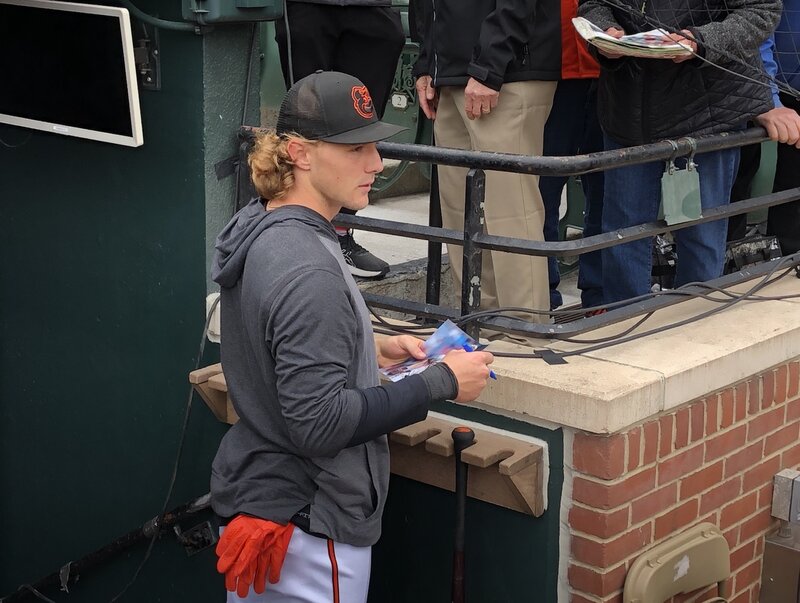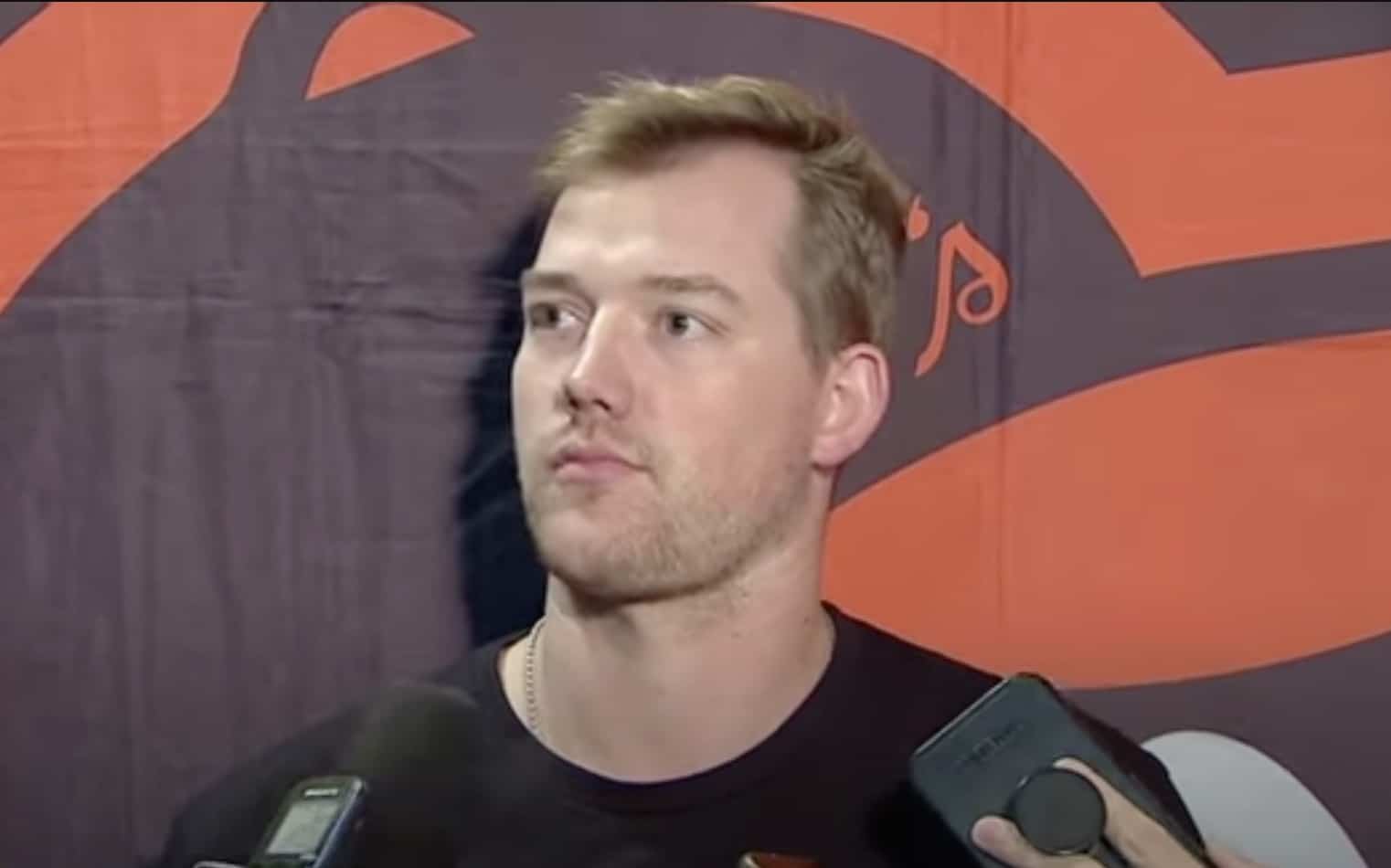Frustration turned to astonishment at some point over the last week watching the Orioles try to pitch.
Even the best clubs endure a poor stretch from time to time, but a streak of 19 consecutive games allowing five or more runs is nothing short of historic. It’s the kind of American League record a team never wants to set, but the Baltimore staff has been a special kind of bad over the last three weeks after merely being below average before that.
That reality begs the question of where it ranks among the most infamous periods of futility in franchise history. A 6-13 record over the streak isn’t anything memorable from a historical context, but a 7.33 ERA over that long of a stretch is difficult to fathom. Since starting a surprising 22-10 with a respectable 3.85 ERA, the Orioles have gone just 13-27 while pitching to a horrendous 6.13 ERA.
Those pitching numbers are worse than virtually any other stretch that Orioles fans have tried to forget over the years.
Remember that 14-42 conclusion to 1986 that sent the Orioles to the first last-place finish in club history? The team ERA of 5.05 over that stretch pales in comparison to the current club’s streak.
The historic 0-21 start for the 1988 Orioles was accompanied by a 5.96 ERA. That number is worse than it looks today in what was a lower scoring environment at the time, but it still doesn’t measure up to the current pitching streak on the precipice of a major league record.
The Orioles posted a 5.63 ERA over their unthinkable 4-32 finish to complete the 2002 season. It was an incredible collapse after that young club had reached the .500 mark in late August, but the pitching still wasn’t historically poor.
The only notable period of time that stands out as being worse statistically than the current staff’s run is a 3-18 stretch for the 2007 Orioles that included an absurd 8.95 ERA as well as the previous club record for the most consecutive games (11) allowing five or more runs. That run included the humiliating 30-3 loss to Texas – which does skew the team ERA during that stretch – but removing that outlier still leaves a 7.89 ERA over the other 20 contests.
Even if you give the 2007 Orioles the nod for the most pathetic run of pitching in club history, there’s no denying the current staff being on a very short list of the worst.
“The Streak” has just put it under an unwelcome spotlight for the entire baseball world to see.
Positive signs for Gausman
If you’re looking for any semblance of hope in regards to the starting rotation, Kevin Gausman showed positive signs despite so-so final results in Wednesday’s 5-1 loss to Cleveland.
The right-hander struck out a season-high nine batters and walked only two, showing improved fastball command and throwing strikes on 66 percent of his pitches. An obvious difference in his performance was the increased use of his split-changeup, which had been his best secondary pitch in the past and has fallen by the wayside too frequently this year. Gausman threw it a season-high 23.2 percent of the time against the Indians, inducing swings and misses on nine of the 26 he threw.
It’s worth noting that the Cleveland order did include six left-handed bats and the split-change plays better against lefties, but Gausman also threw it effectively against right-handers, twice striking out the dangerous Edwin Encarnacion with the pitch. It was a welcome change after seeing the 26-year-old rely too much on his slider this season with such underwhelming results.
Another potentially interesting development from his start came from BrooksBaseball.net. According to the data-collecting site, Gausman threw his sinker more than 54 percent of the time after barely throwing the pitch all season. Statcast data still reported his fastball as a four-seamer, however, and Gausman made no mention of a change in his post-game interview Wednesday. It’s worth noting that his average fastball velocity was down a bit from recent starts, which could also support the possibility of him using a different grip.
Of course, Gausman ran into trouble in a three-run fifth inning as his command wasn’t as sharp and he relied too heavily on his fastball at times despite getting into plenty of favorable counts that called for secondary stuff. But the overall eyeball test showed a better Gausman than we’ve seen throughout 2017.
Now he needs to prove whether that was a turning point or a mere aberration.
Buyers or sellers?
Much has been made about reports of the Orioles’ intentions to be buyers at the trade deadline, but we’re still four or five weeks away from any definitive calls needing to be made.
It’s understandable not to want to concede anything publicly as Baltimore entered Friday just 2 1/2 games out of the second wild card, but even the eternal optimist would have to scoff at the notion of the Orioles being a legitimate contender if there isn’t some substantial on-field improvement sooner than later. And then there’s the issue of what exactly the Orioles have in their system to give up if they want to try to add any pieces to truly move the meter.
Keep in mind there are various degrees of buying or selling that could play out. Even if executive vice president of baseball operations Dan Duquette concludes that contention isn’t in the cards by the time late July rolls around, that doesn’t mean a full-blown fire sale would take place. Moving the likes of Seth Smith, Welington Castillo, Hyun Soo Kim, and Wade Miley in the short term might fetch a complementary piece or two and not necessarily wreck the potential to make another run in 2018, regardless of whether that’s the wisest way to proceed.
However, it’s difficult envisioning the Orioles trading Manny Machado or Zach Britton before ownership at least determines the long-term status of Duquette and manager Buck Showalter, who are both under contract through only next year. At this point, moves of that magnitude feel more like offseason agenda items.
Regardless of how the next few weeks play out on the field, these conversations need to happen before any meaningful roster decisions should be made to shape the present and, more importantly, the future of the organization.
































